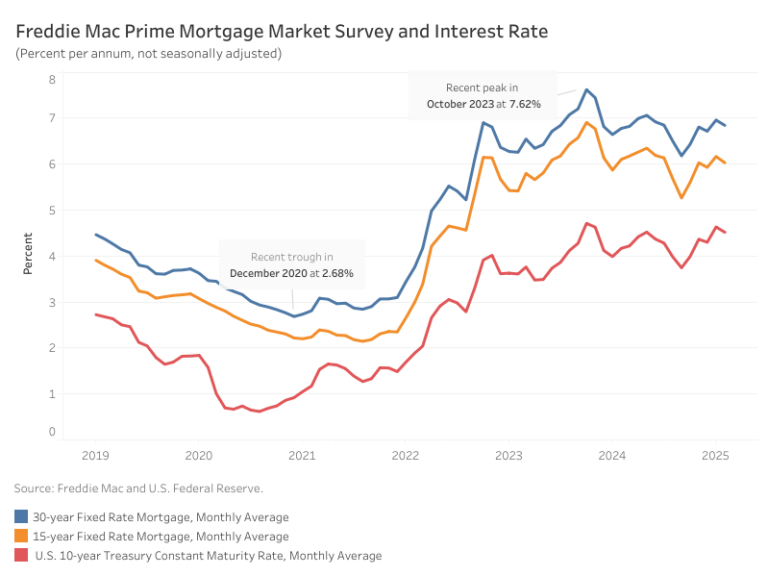Mortgage rates declined marginally in February, with the average 30-year fixed-rate mortgage falling to 6.84%. After climbing steadily since December and peaking at 7.04% in mid-January, rates have been trending downward.
According to Freddie Mac, the average rate for a 30-year fixed-rate mortgage decreased 12 basis points (bps) from January, while the 15-year fixed-rate mortgage fell 13 bps to 6.03%. Although the recent decline in mortgage rates and an increase in the total single-family homes supply are positive signs for buyers, homebuying activity may remain sluggish due to persistent high prices and mortgage rates still exceeding 6%.
The 10-year Treasury yield declined 11 bps to an average of 4.52% in February, reversing its recent upward trend. This shift reflects concerns over a weakening U.S. economy due to inflationary pressures and increasing geopolitical risks. In response, the markets anticipate that the Federal Reserve will resume rate cuts later in the year.
Discover more from Eye On Housing
Subscribe to get the latest posts sent to your email.
This article was originally published by a eyeonhousing.org . Read the Original article here. .


